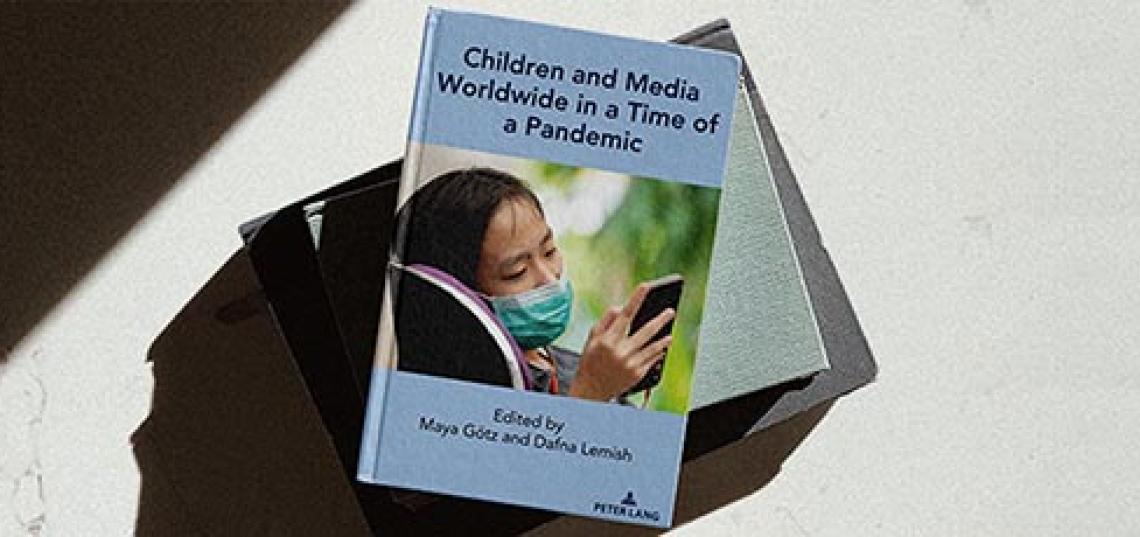
Media play an indispensable role in children’s lives during a time of crisis by providing information, helping them manage their moods and emotions, and facilitating social connections, according to findings from a new book co-edited by Associate Dean for Programs and Distinguished Professor of Journalism and Media Studies Dafna Lemish and Maya Götz, the Director of the International Central Institute for Youth and Educational Television (IZI) and PRIX JEUNESSE International.
Understanding how the media impact children has become critical during the COVID pandemic, Lemish said, because children “are under high level of stress and anxiety, they are often marginalized to various levels, and their needs for information and emotional support are heightened.
The edited collection, “Children and Media Worldwide in a Time of a Pandemic,” also finds that media professionals communicating with children during a time of crisis need to provide them with age-appropriate, context-sensitive, knowledge-enriching information which will enable them to raise their own questions, share their perspectives, and gain a sense of control over their lives.
Understanding how the media impact children has become critical during the COVID pandemic, Lemish said, because children “are under high level of stress and anxiety, they are often marginalized to various levels, their needs for information and emotional support are heightened, their dependency on the media is exasperated when they’ve been restricted to their homes (e.g., during the pandemic lockdown), and they are socially isolated. Media have become their lifeline to the world.”
The book’s findings are based on the responses of 4,200 children aged 9-13 to an international on-line survey administered in 42 countries, as well as additional complementary localized studies.
Because the book highlights the importance of bridging the gap between academia and industry, the audiences for the book include scholars in the fields of media studies, education, and psychology, as well as media professionals and policymakers.
The survey questions were designed to help the researchers discover more about the lived experiences of children during the first wave of the COVID-19 outbreak in the spring of 2020, Lemish said, with an aim to understanding children’s knowledge of the pandemic and emotional reactions to it; the adjustments they made in their everyday lives; and the strengths and skills they developed. Countries participating in the survey used the same online-questionnaire and scholars from the different cultures collaborated in the analysis and writing of the various chapters of the edited collection.
Lemish said the book includes research conducted in populations that are rarely studied – such as refugee children from Syria; children in Sub-Saharan Africa; children with various disabilities; children from multi-cultural societies; in addition to children from a variety of cultures and social classes. “The book provides a glimpse into the lives of children in very diverse contexts and conditions in all continents (not just from WEIRD societies -- Western Educated Industrialized Rich Democracies) and provides a better understanding of those aspects that are universal and those that are particular, or culture-specific,” Lemish said.
The book’s findings are based on the responses of 4,200 children aged 9-13 to an international on-line survey administered in 42 countries, as well as additional complementary localized studies.
The edited collection ends with a final chapter that reflects upon and explores the lessons the contributing authors learned about media and children during the COVID-19 pandemic that could be valuable to practitioners, policymakers, educators, and scholars during future crises.
These include, Lemish said, “the need to provide children with age-appropriate content so they can comprehend it, benefit from it, and not be overwhelmed emotionally; the need to give children opportunities to have an agency – to ask questions and to share their own perspectives on the crisis; the need to see what the lives of other children in other societies look like and how they are handling the crisis; the need to give children opportunities to help them learn how to control their emotions and difficulties; and suggestions for ways they can be active and have a sense of control over their lives, even if it is in small ways.”
Because the book highlights the importance of bridging the gap between academia and industry, the audiences for the book include scholars in the fields of media studies, education, and psychology, as well as media professionals and policymakers.
“Both can learn from each other and collaborate on investing in the wellbeing of children,” Lemish said.
Discover more about the Journalism and Media Studies Department at the Rutgers School of Communication and Information on the website.
Image: Courtesy of Dafna Lemish
